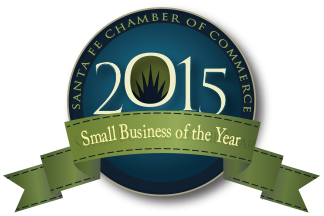04 Dec Multiples, Demystified
 Multiples are tricky things to figure out when you’re valuing a business for sale. Lots of opinions are floating around, most stemming from imperfect information. Uncle Bob’s golf buddy sold his widget store for a million bucks based on a multiple of five! Such “buddy wisdom” can lead you astray. Unrealistic expectations can result in a price point that the market simply won’t support. Your business languishes with little to no buyer activity.
Multiples are tricky things to figure out when you’re valuing a business for sale. Lots of opinions are floating around, most stemming from imperfect information. Uncle Bob’s golf buddy sold his widget store for a million bucks based on a multiple of five! Such “buddy wisdom” can lead you astray. Unrealistic expectations can result in a price point that the market simply won’t support. Your business languishes with little to no buyer activity.
First Things First
So, what is a multiple to begin with? Basically, a multiple is a number by which you multiply the economic benefit enjoyed by the owner of a business. With large businesses, this benefit is frequently expressed as EBITDA, an acronym for Earnings Before Interest, Taxes, Depreciation and Amortization. While EBITDA makes sense in the M&A realm, where businesses generating $10 million or more in annual sales are exchanging hands, EBITDA isn’t always the best fit with for small businesses. Besides the difference in sheer size, the owners’ group frequently doesn’t play an active, hands-on role in the operation of these larger businesses. Think passive investors.
In contrast, Main Street businesses are frequently helmed by an owner/operator. It’s also relatively common for the owner/operator to run some personal expenses through the business. These could include their personal health and life insurance, the lease expense for a personal vehicle, which they don’t plan to convey with the sale of their business, or the cell phone plan for their family. After all, such practices are one of the benefits of being a small business owner. In essence, SDE (Sellers Discretionary Earnings, also known as Cash Flow) is EBITDA with a few adjustments, including owner’s compensation and personal, discretionary expenses.
There’s more to SDE than this, but that’s it in a nutshell. While multiples can also be applied to the business’ Gross Revenue, SDE shows how much income a new owner will have to live on and pay off pay debt service incurred by taking out a loan to secure the purchase. When done right, SDE is a buyer’s potential Return on Investment for a given business.
Multiples in Action
How is the multiple determined and used, besides Uncle Bob’s questionable tips? Let’s take a simplified example.
You would like to sell your small to medium-sized business, Widgets R Us. What price should you ask?
Ideally, there’s a lot of market data to inform this decision. In the field of comparable widget stores that have sold (based on sector, size, revenue, location, etc.) what is the average sales price? Say it’s $300,000.
Now, what’s the average SDE of those widget businesses that have sold? Say that is $100,000.
The multiple is the result of dividing the average price by the average SDE. In this case, $300,000/$100,000 = 3.
Let’s further say your business’ average SDE over the last three years comes out to $130,000 because your sales team is really good at selling widgets. Nice! The price for your business would be $130,000 x 3 = $390,000.
Ze Plot Thickens
That is a pared down example. In real life, the process can be complicated by the quality (or lack thereof) of the financials, market trends, client concentration, how dependent the business is on you, and a host of other factors.
Keeping with the same example above, let’s say that you’re the genius behind your business’ eye-popping widget sales. Over the years, you’ve cultivated relationships with key clients who refuse to deal with anyone else at your widget shop. How does this effect the transferable value of your business? You’ll need to wrestle with such questions.
But Wait, There’s More…
Also keep in mind that multiples, no matter how fact-based, are not the end-all, be-all. A sophisticated buyer will also take into consideration the income they’ll be earning, after debt service, based on their down payment. This is known on as the Internal Rate of Return. An experienced broker can work with you to understand and interpret all this information. You can drastically help this process by having well organized, professionally-prepared financial records. At a minimum, we like to analyze the most recent three years of P&Ls, tax returns and a current balance sheet to get a clear picture of the performance of your business. Buyers want to study these in-depth, often bringing in their CPA or financial advisor, to understand what they’re potentially getting into!
If there isn’t a lot of useful data to go on, there are some tricks of the trade that are based on way more experience than Uncle Bob’s sample size of one or two stories. Brokers have access to information that isn’t available to the general public. They frequently have experience selling businesses similar to yours. The best sales data aggregates the actual sales price of businesses provided by financial institutions and certified business appraisers. They check and double-check the information that goes into making up the SDE number.
Onward!
It’s well worth your while to consult a knowledgeable expert to make sure you’re valuing your business at an optimal price to both sell the business and maximize your achievable profits.









